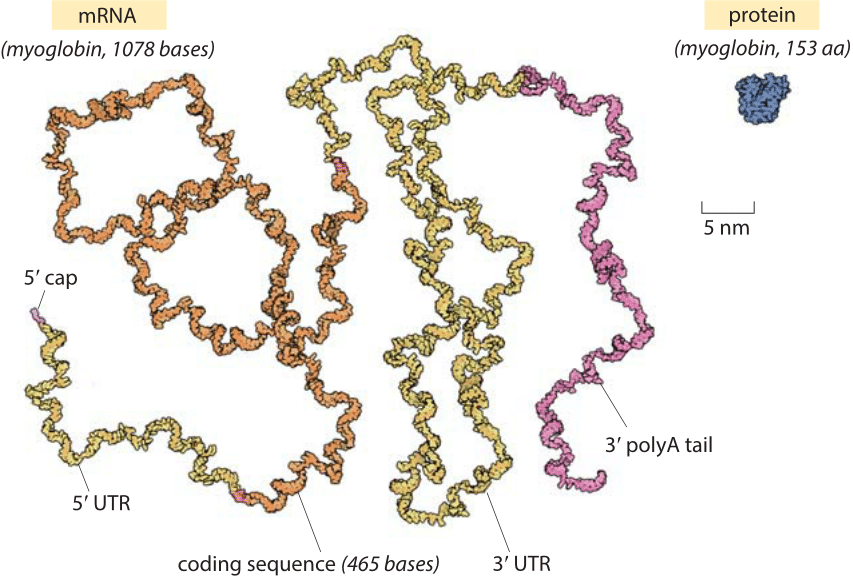- The fact that surface area and volume increase faster than an object’s linear dimensions has profound and widespread implications for biology. All living things feed, breathe and get around, but the various mechanisms used for them rely on biophysics that works best within certain size domains. As organisms get larger or smaller, they need solutions appropriate to their scale.
So much to learn, and so few articles that are fun and educational.
How large are the cells of a blue whale compared to those of a fruit fly?
Are sponges (more like) plants or animals?
Refers to a classic from the m_w feed:
this is why I'm trying to read cell biology by the numbers but every time I pick it up I remind myself I'll forget it all anyway
Which is bigger, mRNA or the protein it codes for?
Figure 1: The relative sizes of a globular protein and the mRNA that codes for it. The myoglobin protein is drawn to scale next to the mRNA transcript that leads to it. The coding sequence of an mRNA alone is about an order of magnitude heavier by mass than the protein. The myoglobin protein is in blue, the 5’ cap and 3’ polyA tail are in purple, the 5’ and 3’ untranslated regions (UTRs) are in yellow and the coding sequence is in orange. Illustration by David Goodsell.